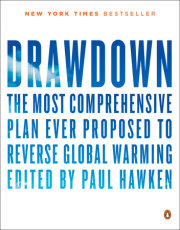Foreward
As a climate scientist, it’s disheartening to witness world events unfold as they have over the past few decades. The clear and precise warnings we scientists have made about our planet’s changing climate are materializing as predicted. Greenhouse gases are trapping heat in the earth’s atmosphere, producing warmer seasons and an amped-up water cycle.
Warmer air holds more moisture, allowing for higher rates of evaporation and precipitation. Record heat waves, coupled with intense droughts, spark the perfect conditions for massive wildfires. Warming oceans trigger supercharged storms, with greater rainfall and higher storm surges. We can expect a steady rise in extreme weather events in the coming decades, potentially causing countless lost lives and significant financial losses.
Whether we like it or not—whether we choose to “believe” the science or not—the reality of climate change is upon us. It’s affecting everything: not just weather patterns, ecosystems, ice sheets, islands, coastlines, and cities across the planet, but the health, safety, and security of every person alive and the generations to come. Worldwide, we’re seeing related symptoms like the acidification of our oceans, which could devastate coral reefs and marine life, and the changing biochemistry of plants, including staple crops.
We know exactly why this is happening. We’ve known for more than a hundred years.
When we burn fossil fuels (coal, oil, and natural gas), manufacture cement, plow rich soils, and destroy forests, we release heat-trapping carbon dioxide into the air. Our cattle, rice fields, landfills, and natural gas operations release methane, warming the planet even more. Other greenhouse gases, including nitrous oxide and fluorinated gases, are seeping out of our agricultural lands, industrial sites, refrigeration systems, and urban areas, compounding the greenhouse effect. It’s important to remember that climate change stems from many sources such as energy production, agriculture, forestry, cement, and chemical manufacturing; thus, the solutions must arise from those same many sources.
Beyond the damage to our planet, climate change threatens to undermine our social fabric and the foundations of democracy. We see the impacts of this in the United States in particular, where key parts of the federal government are denying the science, and are closely aligned with fossil fuel industries. While most people continue to move through their day as if nothing is wrong, others who are aware of the science are fearful, if not in despair. The climate change narrative has become a doom and gloom story, causing people to experience denial, anger, or resignation.
At times, I have been one of those people.
Thanks to
Drawdown, I have a different perspective. Paul Hawken and his colleagues have researched and modeled the one hundred most substantive ways we can reverse global warming. These solutions reside in energy, agriculture, forests, industries, buildings, transportation, and more. They also highlight critical social and cultural solutions, such as empowering girls, reducing population growth, and changing our diets and consumption patterns. Together, these solutions not only slow climate change, they can reverse it.
Drawdown goes beyond solar panels and energy-efficient light bulbs to show that the needed solutions are far more diverse than just those associated with clean energy, and that there are many effective means to address global warming.
Drawdown illustrates how we can make dramatic strides by reducing the emissions of more exotic greenhouse gases, like refrigerants and black carbon, lowering nitrous oxide emissions from agriculture, cutting methane emissions from cattle production, and reducing carbon dioxide emissions from deforestation. Moreover,
Drawdown demonstrates the potential for removing carbon dioxide from the atmosphere through innovative land use practices, regenerative agriculture, and agroforestry.
But, more importantly to me,
Drawdown illuminates ways we can overcome the fear, confusion, and apathy surrounding climate change, and take action as individuals, neighborhoods, towns and cities, states, provinces, businesses, investment firms, and non-profits. This book should become the blueprint for building a climate-safe world. By modeling solutions that are hands-on, well understood, and already scaling,
Drawdown points to a future where we can reverse global warming and leave a better world for new generations.
We think that our climate future is harsh because news and reports have focused on what will happen if we do not act.
Drawdown shows us what we can do. Because of that, I think this is the single most important book ever written about climate change.
Drawdown has helped restore my faith in the future, and in the capacity of human beings to solve incredible challenges. We have all the tools we need to combat climate change, and thanks to Paul and his colleagues, we now have a plan showing us how to use them.
Now let’s get to work and do it.
Dr. Jonathan Foley Executive Director, California Academy of Sciences San Francisco
Copyright © 2017 by Edited by Paul Hawken. All rights reserved. No part of this excerpt may be reproduced or reprinted without permission in writing from the publisher.






